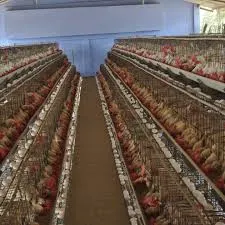floating feed extruder machine
ਅਕਤੂਃ . 18, 2024 15:01 Back to list
floating feed extruder machine
The Advancements and Applications of Floating Feed Extruder Machines
Floating feed extruder machines have become an integral part of the aquaculture and animal feed industries. These machines are designed to produce floating feed pellets, which are essential for the healthy growth of fish, shrimp, and various other aquatic species. With the rise in demand for sustainable aquaculture practices and high-quality animal feeds, the floating feed extruder machine has gained significant attention for its efficiency and effectiveness in feed production.
Understanding Floating Feed Extrusion
Extrusion is a process that involves forcing a material through a die to create a specific shape. In the context of floating feed, the extrusion process applies high temperature and pressure to feed ingredients, leading to physical and chemical changes. This process not only increases the digestibility of the feed but also helps in maintaining the buoyancy of the pellets, allowing them to float on the water surface. This buoyancy is crucial as it ensures that the feed is accessible to fish and other aquatic organisms, thereby minimizing waste and promoting better feed conversion ratios.
Key Features of Floating Feed Extruder Machines
Floating feed extruder machines are equipped with advanced technology that allows for optimal feed formulation. Here are some key features of these machines
1. High-Temperature and Pressure Processing The extrusion process involves cooking the feed material under high pressure and temperature, which sterilizes the ingredients and improves their nutritional profile.
2. Adjustable Die Sizes Different aquatic species have varying feed requirements. Floating feed extruder machines can be equipped with interchangeable die sizes, allowing producers to create pellets of different shapes and sizes catered to specific species.
3. Energy Efficiency Modern floating feed extruder machines are designed to minimize energy consumption, making them cost-effective for large-scale production. This efficiency is critical as energy costs are a significant component of feed manufacturing.
4. Durability and Reliability These machines are generally built with high-quality materials to withstand the wear and tear of continuous operation. A reliable machine is essential for maintaining production schedules and meeting demand.
floating feed extruder machine

5. User-Friendly Control Systems Many machines come with automated control systems that allow operators to easily monitor and adjust various parameters, such as temperature, moisture content, and feed flow rate, ensuring consistent pellet quality.
Applications in Aquaculture
The floating feed produced by extruder machines serves a variety of purposes in aquaculture
- Feed for Ornamental Fish Floating pellets are commonly used in the ornamental fish industry, where vibrant color and health are essential. The pellets ensure that fish can feed naturally from the water surface.
- Commercial Fish Farming For species like catfish, salmon, and tilapia, floating feed enhances feeding efficiency and growth rates. This has a direct impact on the profitability of fish farming operations.
- Shrimp Farming Floating feed is crucial in shrimp farming as it ensures that the feed is available for consumption without excessive sinking, which can lead to waste. Well-formulated floating feed can improve the overall health of shrimp and yield better harvests.
The Future of Floating Feed Extruder Machines
As the global demand for fish and seafood continues to rise, the importance of efficient feed production escalates. Innovations in floating feed extruder technology are expected to focus on enhancing nutrient retention, minimizing environmental impact, and further increasing energy efficiency. Additionally, integrating smart technology and data analytics will likely play a role in optimizing feed formulations and production processes.
In conclusion, floating feed extruder machines are vital for producing high-quality, nutritious floating feed for aquaculture and animal husbandry. With advancements in technology and a growing emphasis on sustainability, these machines will continue to evolve, ensuring that they meet the ever-increasing demands of the industry. As aquaculture practices become more refined, the role of floating feed extruder machines will only become more prominent, contributing to a more efficient and sustainable future for global food production.
-
Greenhouse Ventilation Cooling System-Yizemachine|Energy Efficiency&Crop Growth
NewsJul.13,2025
-
Corn Rice Husk Maize Grinder Hammer Mill-Yizemachine|High-Efficiency Grain Processing&Sustainable Farming Equipment
NewsJul.13,2025
-
Advanced Industrial Solutions-Example Corp|Efficiency&Cost Savings
NewsJul.13,2025
-
Chicken Feet Yellow Skin Peeling Machine-Yiye Machine|Efficient,Eco-Friendly
NewsJul.13,2025
-
Chicken Scalder Plucker Machine - Yizemachine | Poultry Processing, Hygienic Design
NewsJul.13,2025
-
SmartFactory Solutions-AI-Powered Automation|Industrial Efficiency&Manufacturing Optimization
NewsJul.13,2025






